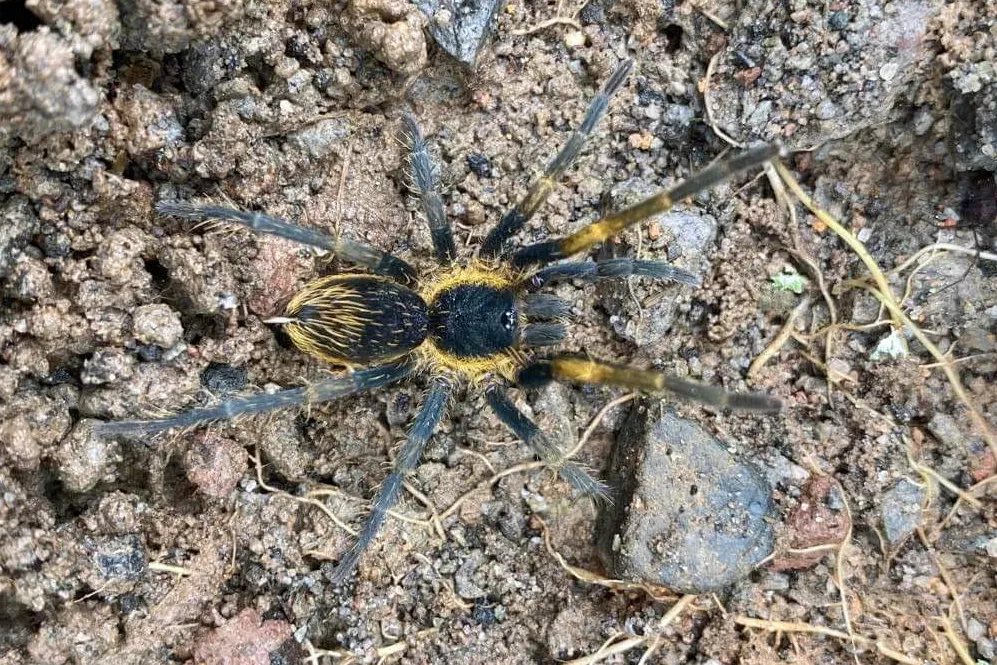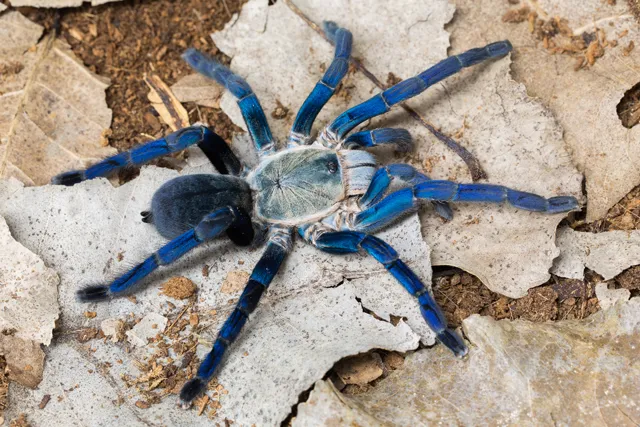What is a Tarantula
Tarantulas are large, hairy spiders belonging to the Theraphosidae family. These fascinating creatures are known for their impressive size, ranging from a few inches to over a foot in leg span. Unlike many spiders, tarantulas are generally docile and not considered highly venomous to humans. They are nocturnal hunters, primarily feeding on insects, but larger species may also consume small vertebrates. These spiders are characterized by their long lifespans, with females often living for several decades, while males have a shorter lifespan. They are found in various habitats, from tropical rainforests to arid deserts, across the globe. Their unique appearance and behavior make them a captivating subject for both scientific study and the pet trade. The study of tarantulas is also important for understanding ecosystems as they play a role in controlling insect populations, contributing to the overall health of their habitats.
Where Do Tarantulas Live
Tarantulas inhabit a diverse range of environments across the world, primarily in tropical and subtropical regions. In Canada, while they aren’t native, they are sometimes kept as pets, and the conditions inside their enclosures replicate their natural habitats. The natural habitats of tarantulas vary greatly, including rainforests, grasslands, deserts, and scrublands. They can be terrestrial, living in burrows or under rocks and logs, or arboreal, residing in trees. The availability of suitable habitats, including appropriate temperatures, humidity levels, and food sources, is crucial for their survival. The distribution of tarantulas is influenced by factors such as climate, vegetation, and the presence of predators and prey. Understanding their habitat preferences is essential for both conservation efforts and responsible pet ownership, ensuring that these magnificent creatures can thrive in their respective environments.
Tarantula Species in Canada

While tarantulas are not native to Canada, several species are kept as pets. The most common species found in Canadian homes include the Chilean Rose Hair tarantula, known for its gentle nature and beautiful coloration. Other popular choices include the Mexican Red Knee tarantula, famous for its striking red and black markings, and the Costa Rican Zebra tarantula. It’s essential to research the specific needs of each species, as their care requirements vary. When considering owning a tarantula, it’s vital to understand the legal aspects, as some regions may have restrictions on keeping exotic pets. Purchasing a tarantula from a reputable breeder or pet store is crucial to ensure its health and proper care. Remember, each species has unique needs regarding temperature, humidity, and diet, making it essential to create an environment that mimics their natural habitat. By educating yourself about tarantula species and their care, you can provide a safe and enriching environment for your exotic pet.
Do Tarantulas Bite
Yes, tarantulas can bite, but it’s usually a defensive behavior, not an aggressive one. Bites typically occur when a tarantula feels threatened, mishandled, or surprised. The bite itself is usually compared to a bee sting, with varying levels of pain depending on the species and the individual’s sensitivity. The effects of a bite can range from mild discomfort and localized swelling to more severe reactions in rare cases. It’s important to handle tarantulas with care, avoiding sudden movements or actions that might startle them. In addition to biting, tarantulas have other defense mechanisms, such as flicking urticating hairs from their abdomen. These hairs can cause skin irritation and discomfort. If bitten, it’s crucial to clean the wound thoroughly with soap and water and monitor for signs of infection or allergic reaction. Understanding tarantulas’ defense mechanisms and handling them with respect can help minimize the risk of being bitten and ensure a safe experience for both the owner and the spider.
Do Tarantulas have Venom
Yes, tarantulas do have venom, but it is generally not considered highly dangerous to humans. The venom is primarily used to subdue prey, such as insects, and its effects on humans are typically mild. A tarantula bite may cause localized pain, redness, and swelling, but serious complications are rare. The venom’s composition varies among different tarantula species, and some individuals may experience stronger reactions than others. In some cases, people may experience allergic reactions, though these are uncommon. If bitten, it’s crucial to clean the bite area thoroughly and monitor for any unusual symptoms. Unlike some other spiders, tarantula venom is not known to cause significant systemic effects. It is important to note that while the venom is not usually life-threatening to humans, tarantulas should still be handled with caution, and bites should be treated appropriately. Understanding that these spiders possess venom helps underscore the need for responsible handling and care when interacting with them.
How to Identify a Tarantula

Identifying a tarantula involves recognizing key characteristics, such as size, body shape, and coloration. Tarantulas are known for their large size and hairy appearance, making them distinct from other spiders. The body of a tarantula is typically divided into two main parts: the cephalothorax and the abdomen. The cephalothorax includes the head and the thorax, while the abdomen is the posterior section. Observing the leg span is a useful measure, with some species reaching over 10 inches. The coloration and patterns on the body can vary widely, providing clues for identification. Some species have striking patterns of red, orange, yellow, or black, while others are more uniform in color. To correctly identify a tarantula, it’s important to consult field guides or online resources that provide detailed descriptions and images. Furthermore, observing the presence of urticating hairs, a defense mechanism that some tarantulas have, can also aid in identification. Familiarizing yourself with these features will help you distinguish tarantulas and understand their unique characteristics.
Caring for a Tarantula in Canada
Caring for a tarantula in Canada requires providing a suitable habitat and meeting its specific needs. A proper enclosure should replicate its natural environment, with appropriate temperature, humidity, and substrate. The enclosure should be large enough for the tarantula to move around comfortably. Heating the enclosure to the required temperature is crucial, using heat lamps or pads. Maintain the correct humidity levels by misting the enclosure regularly or providing a water dish. The substrate should be appropriate for the species, typically consisting of coconut fiber, peat moss, or a mix. Feeding your tarantula a balanced diet of insects, such as crickets, mealworms, or roaches, is essential. The frequency of feeding depends on the tarantula’s size and age. Providing fresh water at all times is also a must. Handling should be minimized to prevent stress, and the enclosure should be cleaned regularly. Regular research is essential to tailor the care to the specific needs of your tarantula species, ensuring a healthy and enjoyable experience for both you and your pet. With proper care, a tarantula can thrive in a Canadian home.
Conclusion
Tarantulas are fascinating creatures that can make unique and rewarding pets for those who are willing to provide the appropriate care. Understanding their characteristics, from their habitats and behaviors to their venom and defense mechanisms, is essential for responsible ownership. With the right environment, diet, and handling, these spiders can thrive in a Canadian home. Whether you’re a seasoned arachnid enthusiast or a curious beginner, educating yourself about tarantulas is the key to a safe and enjoyable experience with these amazing animals. By providing a suitable environment and meeting their needs, you can contribute to the well-being of your tarantula and appreciate its unique beauty and behavior.
